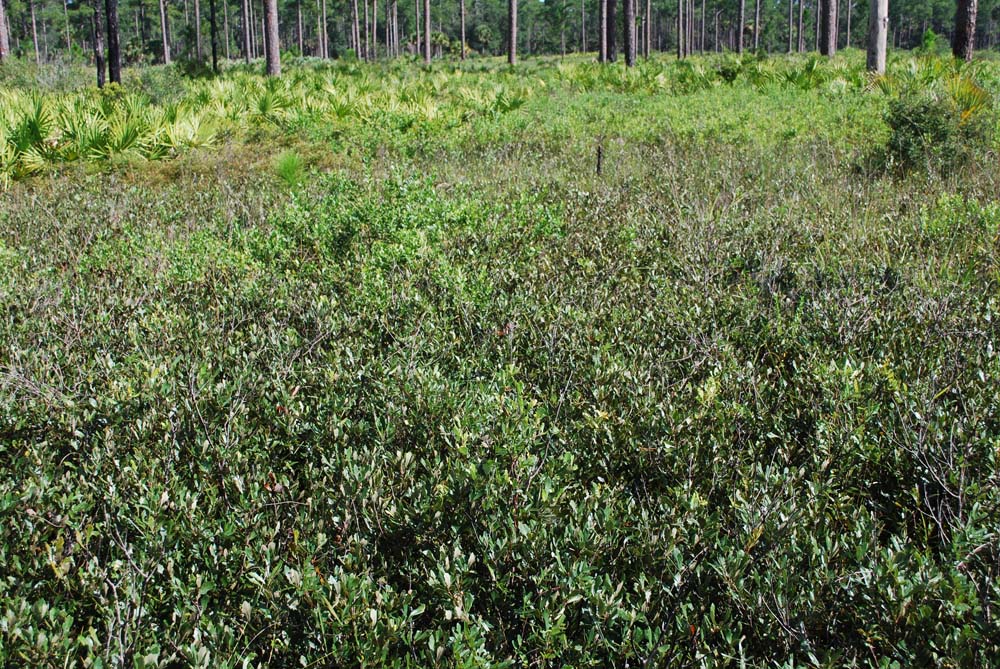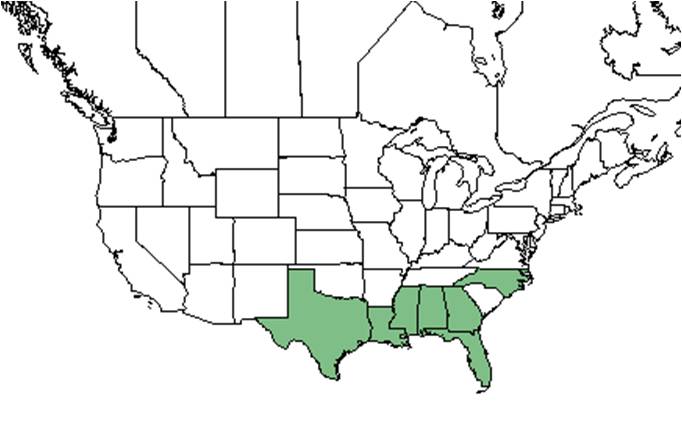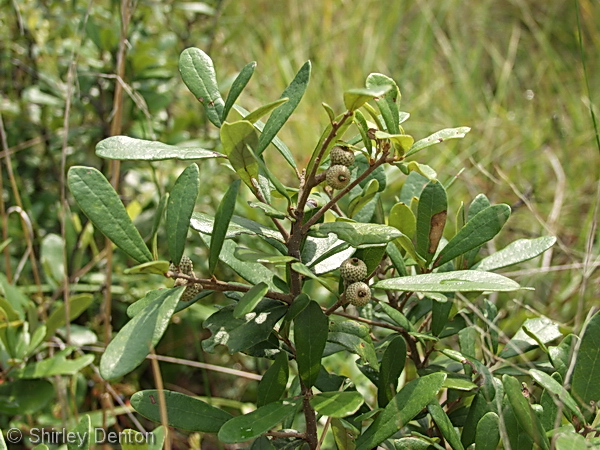Difference between revisions of "Quercus minima"
Lsandstrum (talk | contribs) (→Ecology) |
|||
| Line 26: | Line 26: | ||
==Distribution== | ==Distribution== | ||
==Ecology== | ==Ecology== | ||
| − | + | ===Habitat=== <!--Natural communities, human disturbed habitats, topography, hydrology, soils, light, fire regime requirements for removal of competition, etc.--> | |
| + | ''Q. minima'' responds negatively to soil disturbance by roller chopping in Northwest Florida sandhills.<ref>Hebb, E.A. (1971). Site Preparation Decreases Game Food Plants in Florida Sandhills. The Journal of Wildlife Management 35(1):155-162.</ref> | ||
| + | |||
===Phenology=== <!--Timing off flowering, fruiting, seed dispersal, and environmental triggers. Cite PanFlora website if appropriate: http://www.gilnelson.com/PanFlora/ --> | ===Phenology=== <!--Timing off flowering, fruiting, seed dispersal, and environmental triggers. Cite PanFlora website if appropriate: http://www.gilnelson.com/PanFlora/ --> | ||
''Q. minima'' has been observed to flower from March to May and in September with peak inflorescence in April.<ref>Nelson, G. [http://www.gilnelson.com/ PanFlora]: Plant data for the eastern United States with emphasis on the Southeastern Coastal Plains, Florida, and the Florida Panhandle. www.gilnelson.com/PanFlora/ Accessed: 13 DEC 2016</ref> | ''Q. minima'' has been observed to flower from March to May and in September with peak inflorescence in April.<ref>Nelson, G. [http://www.gilnelson.com/ PanFlora]: Plant data for the eastern United States with emphasis on the Southeastern Coastal Plains, Florida, and the Florida Panhandle. www.gilnelson.com/PanFlora/ Accessed: 13 DEC 2016</ref> | ||
| Line 41: | Line 43: | ||
<!--===Use by animals===--> <!--Herbivory, granivory, insect hosting, etc.--> | <!--===Use by animals===--> <!--Herbivory, granivory, insect hosting, etc.--> | ||
<!--===Diseases and parasites===--> | <!--===Diseases and parasites===--> | ||
| + | |||
==Conservation and management== | ==Conservation and management== | ||
==Cultivation and restoration== | ==Cultivation and restoration== | ||
Revision as of 19:52, 12 July 2019
| Quercus minima | |
|---|---|

| |
| Photo by Wayne Matchett, SpaceCoastWildflowers.com | |
| Scientific classification | |
| Kingdom: | Plantae |
| Division: | Magnoliophyta - Flowering plants |
| Class: | Magnoliopsida – Dicotyledons |
| Order: | Fagales |
| Family: | Fagaceae |
| Genus: | Quercus |
| Species: | Q. minima |
| Binomial name | |
| Quercus minima (Sarg.) Small | |

| |
| Natural range of Quercus minima from USDA NRCS Plants Database. | |
Common names: Dwarf live oak, Minimal oak
Contents
Taxonomic notes
Description
A description of Quercus minima is provided in The Flora of North America.
Distribution
Ecology
Habitat
Q. minima responds negatively to soil disturbance by roller chopping in Northwest Florida sandhills.[1]
Phenology
Q. minima has been observed to flower from March to May and in September with peak inflorescence in April.[2]
Pollination
The following Hymenoptera families and species were observed visiting flowers of Quercus minima at Archbold Biological Station: [3]
Apidae: Apis mellifera
Colletidae: Colletes brimleyi
Conservation and management
Cultivation and restoration
Photo Gallery
Fruit of Quercus minima Photo by Shirley Denton (Copyrighted, use by photographer’s permission only), Nature Photography by Shirley Denton
References and notes
- ↑ Hebb, E.A. (1971). Site Preparation Decreases Game Food Plants in Florida Sandhills. The Journal of Wildlife Management 35(1):155-162.
- ↑ Nelson, G. PanFlora: Plant data for the eastern United States with emphasis on the Southeastern Coastal Plains, Florida, and the Florida Panhandle. www.gilnelson.com/PanFlora/ Accessed: 13 DEC 2016
- ↑ Deyrup, M.A. and N.D. 2015. Database of observations of Hymenoptera visitations to flowers of plants on Archbold Biological Station, Florida, USA.
